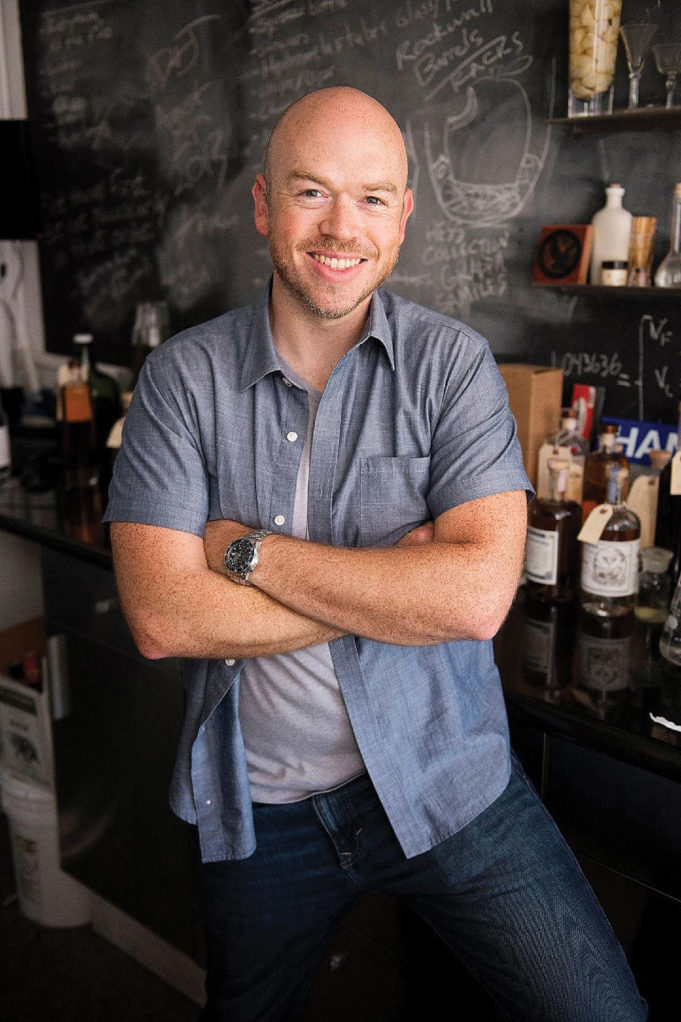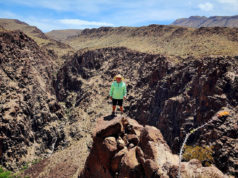Dave Smith, the head distiller at St. George Spirits, is coming to town this week to show off one of his company’s finest concoctions, Terroir Gin, during Fort Worth’s third annual Cocktail Week. The spirit contest he’s been invited to join is the Battle of the Clear, which will pit vodka against gin to see which is the soul of the martini. Smith will be speaking Friday night at The Post, on Race Street.
I caught up with Smith while he was racing across the country, attending two weddings, speaking at a pub in New York City’s East Village and elsewhere, and being generally overwhelmed. One of the first things I asked about was the upcoming Battle of the Clear, a question he was not entirely sure how to answer.
“I don’t really see it as a battle,” he said. “I like all spirits, so long as they have a distinct thumbprint. I’m looking forward to tasting some gin and vodka I’ve never had before and talking about St. George Spirits.”
Smith, a bit of a raconteur, launched into the history of St. George Spirits – a 37-year-old San Francisco Bay-area distillery that is the grandfather of the American craft distillery movement — and how he wound up being its head distiller, a position he loves, though not one he ever imagined for himself.
“In my past life,” Smith said, “I was an English teacher. I wrote stories and could have spent my life writing screenplays about sleeping on my friend’s couch and being unemployed.”
That began to change when he started working with his brother, a winemaker in the Bay area. “I had the opportunity to learn about winemaking from him,” Smith said. “I did two harvests with him, and through that I developed a love of the fermentation sciences. That allowed me to make a statement, not as a writer but as a creator of spirits.”
At some point during his apprenticeship at the winery, Smith’s brother suggested that he meet a fellow named Lance Winters, a former nuclear scientist who was working as the master distiller at an outfit called St. George Spirits.
“Actually, my brother insisted that I take the opportunity to work with Lance, so I took a job he offered,” Smith said. “I thought I’d work at St. George for a year, learn something, then move on, but I absolutely fell in love with the work, and, well, it’s been 15 years and still counting.”
St. George Spirits was founded in 1982 by Jörg Rupf, who had recently come to the United States from Germany. He fell in love with California’s wonderful fruit orchards and began to distill eau de vie — colorless fruit brandy — with pears, raspberries, cherries, and even kiwis. At the time it was established, St. George Spirits was the first small American distillery to open since Prohibition.
Initially, Rupf made his fruit brandies using a single 65-gallon still. By the time Smith came aboard in 2005, that single still operation had grown large enough that St. George Spirits had moved into the 65,000-square-foot Alameda Naval Air Station, and the line of spirits had grown to include whiskey and vodka. Since then, four types of gin, three vodkas, three whiskeys, absinthe, and a host of fruit brandies have been added.
As head distiller at St. George, Smith has a hand in everything that’s produced, but his real love is the St. George Single Malt Whiskey: “The whiskey was Lance’s idea. He’d been distilling it in his garage, and when he came to work here, he tried to get Rupf to include it in the St. George line. Rupf said no, that there were already good examples of Scotch whiskey coming out of Scotland.”
Winters, who’d come to St. George in 1996, persisted, and Rupf finally agreed to experimenting with whiskey, Smith said, on the condition that it would have to have a distinct thumbprint. “It was going to have to express something different than other whiskeys,” Smith said.
St. George put their first single malt into a barrel in 1997, Smith said: “Our single malt program goes back 23 years, and it is unique and highly sought after. We release it annually.”
Good whiskey, Smith added, “is near and dear to my heart, as well as my liver.”
Lot 18, which was released this time last year, had whiskey as young as four years blended with whiskey as old as 15 years. “You try to make a blend greater than the sum of its parts,” Smith explained. “You have to have a sense that not everything older is better. There are more floral accents in younger whiskeys that, when blended with the richness and gravitas of older whiskeys, produce a blend that is both floral and aromatic. I liken it to painting a picture: I don’t want to paint with just one color. I want a diverse palette.”
I pressed him to return to the Battle of the Clear.
“From what I understand,” said Smith, “there will be [two gins and two vodkas] being poured at one event, and attendees will have an opportunity to taste each and vote on their favorite. We’ll be showcasing our Terroir Gin that night, which smells and tastes like a martini in the woods, regardless of where you might be at that moment.”
Smith himself doesn’t have a preference for either gin or vodka: “I think there is room for all spirits. It’s about having the right spirit for the right time and place. There are some gin drinkers and some vodka drinkers and some people who like both. It’s really a question of what you are inspired by, what you enjoy.”
Most importantly for Smith is that whatever he distills has a unique thumbprint: “If there are 40 lemon gins or lemon vodkas out there and they all taste the same, why would anyone make them? I want our products to be all about a unique flavor and character, not imitation or similarity.
“My job as a distiller is to capture a sense memory and translate it through our processes to bottle that,” he continued. “If you can do that, you’ll have a unique spirit.”












